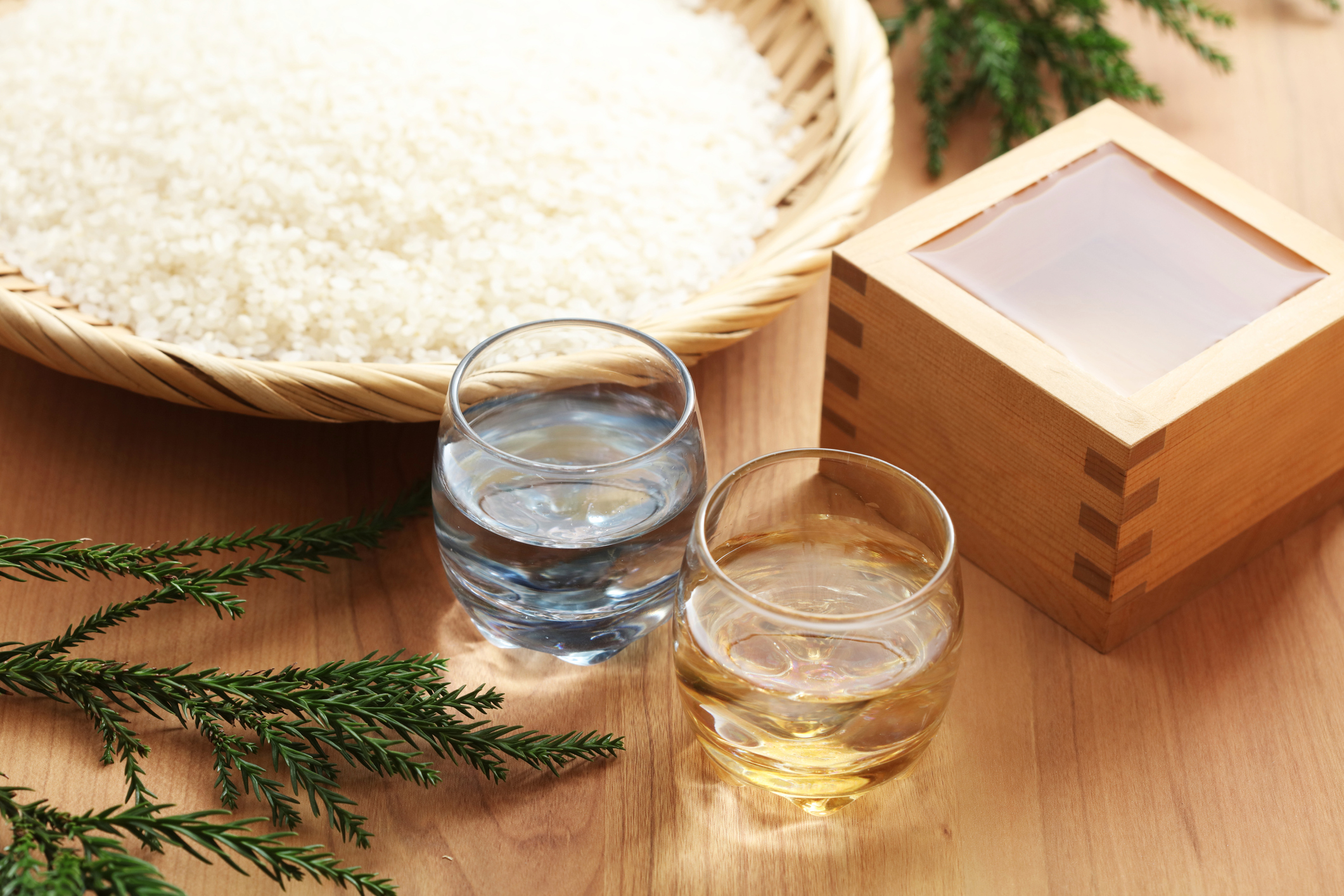types of sake
There are countless varieties and styles of sake beyond the main sake grades that offer endless opportunity for sake fans to explore. These are the sake that deviate standard classifications based on variances in the brewing methodology or treatment after pressing:
Sparkling sake
Light and fizzy sake that can be achieved in one of three ways.
1) carbon dioxide is simply injected into finished sake
2) CO2 is retained in the bubbling, fermenting mash
3) similar to sparkling wines, a secondary fermentation happens when active yeasts are transferred inside the bottle.
Check out our sparkling sake range.
Plum sake (umeshu)
Umeshu, sometimes referredto as plum wine, is made by steeping Ume fruits (while still unripe, green and mildy poisonous!) in Japan’s other famous alcohol, shochu, and sugar. Often seen with the fruit still in the bottle, plum sake works great straight, on the rocks or as a cocktail mixer. The best examples are all natural and free from added sugar or any artificial sweetener.
Discover our range of plum sake.
Yuzu sake
Yuzushu is a citrus fruit originating from China and now grown in Japan. In it’s raw state it has a of sharp hybrid of lime, lemon and grapefruit flavours. Added to sake it softens to create an intriguing and versatile beverage that is great over ice, in cocktails or in cooking as a dressing or in desserts. Discover this chef and bartenders favourite.
Cloudy sake (nigori)
At the pressing stage sake is less finely filtered, usually through a course cloth, to allow some of the unfermented rice particles (lees) to remain in the final sake. The result is creamier in texture and richer and sweeter in taste, pairing nicely with spicy foods or desserts.
Namazake (Unpasturised) — Most sake is pasturised twice — once after pressing and once before bottling — to avoid the chances of it spoiling before being drunk. Namazake means unpasturised sake (Nama, roughly translates as raw or live) and refers to sake that has been either once pasturised or not at all. The taste is distinctive — fresher and sharper than other sake. Namazake should also be consumed quicker than usual and be kept refrigerated once opened to avoid spoiling.
Genshu (Undiluted) — no additional water is added to the completed sake to temper the alcohol levels.
Muroka (Unfiltered) — sake is usually charcoal filtered after pressing to remove impurities and leave a clear liquid. Muroka sake is where no secondary filtering has occurred.
Yamahai & Kimoto — natural lactic acid (rather than manufactured) is encouraged into the open starter mash (Shubo) tank through the mixing of ingredients. The traditional kimoto method uses a back-breaking manual technique with long oar-like poles (Kai). The result is a distinctive, rich flavour.
Tarusake (Barrel stored) — finished sake is stored in often decorative cedar barrels which impart a distinctive refreshing woody flavour. Commonly used in festival and wedding celebrations. Koshu (Aged) — sake is usually stored for 3–6 months before being shipped to allow the final flavour to develop and settle. The convention has also been that Sake, like beer, is better consumed soon after production. Koshu however is generally aged for 3 years or more, a process that draws out much more intense aromas, richer flavours and deeper, golden colours. It’s a whole new Sake world.
Kijoshu — a truly decadent approach to brewing! Where water usually added in the third and final stage of the main fermentation mash process (Tome), is replaced with sake! Very rare, the result is a rich, velvety nectar.






